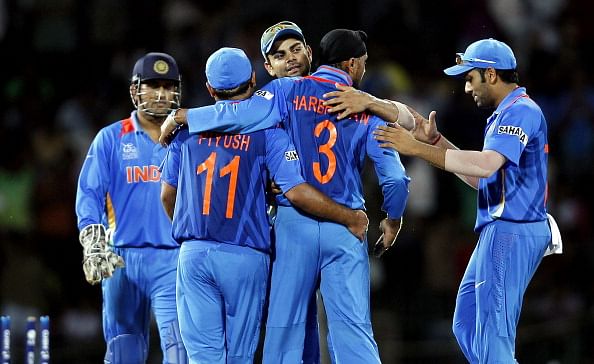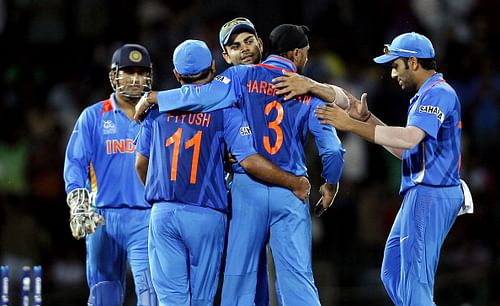
Play Smart: 5 suggestions for India to do well at the T20 World Cup

Cricket is supposed to be a game of glorious uncertainties and its level of unpredictability seems to have gone up by a notch in its most fast-paced avatar, called the T20.
So it comes as no surprise that it is hard to pick a side or two as overwhelming favourites in the 2012 T20 World Cup in Sri Lanka.
However despite the fickle nature of this format India’s chances in this edition looks quite slim owing primarily to its extremely lacklustre bowling unit. The batting form of some of the key performers has not helped its cause either.
To be a serious contender India has to play smart and make the best use of the resources at its disposal. Given below are some suggestions that can enhance their performance in this World Cup:
Team Structure: This is the first point that needs to be addressed. Right from the early days of the new millennium we have fielded a 7-4 combination, with reasonable success. However, in this particular World Cup the cushion of 7th batsman is not applicable because:
a) T20 format: In an ODI a specialist 7th batsman can make a difference because he gets to bat for atleast 10-odd overs. A case in point can be Raina’s performance against Australia in the quarterfinals of the 2011 World Cup. However, in the T20 format he is most likely to come in to bat after 17 overs, and all that the team needs at that time is a few hefty blows and acceleration towards the finishing line.
b) Location: The tournament is taking place in Sri Lanka. The changed pitch conditions notwithstanding, it is virtually equivalent to playing at home for Indian batsmen. That makes it unlikely that our top-six batsmen will cave in within say, 12 overs, and a specialist 7th batsman will be the need of the hour.
Pathan and Ashwin are quite capable with the bat as well, having proved it in the IPL as well as in the international scenario.
c) Bowling: Our bowling is our Achilles heel. If any of our four front line bowlers take a beating, then it is always better to have the cushion of a fifth specialist bowler. Also, if an opposition batsman gets going, the more we are able to rotate our bowlers, the better it is. Hence, a specialist fifth bowler, even if he bowls two overs, can be more useful to the team than the seventh specialist batsman who comes in to bat in the last over.
Open with Kohli: The next aspect of playing smart would be to open with Kohli. T20 as a format gives more credence to the form than reputation or class of a particular team or individual. Kohli is the man in form. So it is imperative to give him the maximum possible opportunity to stamp his authority on the match. He did excel in the recent T20 match against New Zealand as an opener.
Flexible batting order: We should send in batsmen depending on the overs left and the match situation. For example, Rohit/ Gambhir can come in to bat if a wicket falls early. However if the opening pair is able to see out the Power Play overs, then Dhoni should come in at number three. Our skipper’s strike rate is one of the lowest (for players who have scored more than 500 runs in T20). It can be said then that his batting is not conducive lower down the order, when he is expected to strike big from the very first ball. It is interesting to note that in the practice T20 against Srilanka, where he scored more than 50 runs at a strike rate of more than 130, he had scored only 14 runs of the first 28 balls he faced.
5th bowler: Since we cannot claim to have a pacer of the pedigree of either a Malinga or Steyn, playing three spinners might make sense. Piyush Chawla seems the most logical decision, as in Ashwin and Yuvraj we already have an offspinner and a left arm tweaker in the eleven. However, Harbhajan has a much better economy rate than Chawla, which can prove decisive. So the final call has to be taken keeping the opponents and the current form of the players in mind.
Bowling pattern: If indeed Harbhajan is given the nod, then Ashwin can bowl in the Power Play overs, while Bhajji can operate during the middle overs. Similarly, we should try giving Zaheer the fullest opportunity to bowl against left handers. Finally we should take a call on whether to play Balaji or Dinda, as the latter’s ability to bowl yorkers at the end could prove invaluable.